20 Atlanta trees you should know

In Atlanta, the “City in a Forest,” our trees play the roles of landmarks, friends, celebrities, teachers and time capsules.
Many are survivors – of war, tornadoes, fires and living room additions. Sprawl is a frenemy, clearing wide swaths in some parts of town and in others, sparing pockets of forest that would be more densely developed in other cities.
Since 2009, ecologist Eli Dickerson has been a volunteer for the Trees Atlanta Champion Tree Program list, a sort-of Who's Who of metro Atlanta's most significant trees (he also maps them). The champion trees program has been in place in Atlanta since the 1990s and follows national guidelines. Trees are measured on a points system and the grandest are declared "champions" for their species and their region. Trees Atlanta just released its updated database of champions.
This Arbor Day, the AJC went searching for trees with special connections to their communities. To assemble our list, we consulted a Dream Team of local arborists, ecologists and enthusiasts, including: Dickerson, ecologist at the Fernbank Museum; Greg Levine, co-executive director of Trees Atlanta; Neil Norton, executive director of the Georgia Arborists Association; Peter Jenkins, founder of Tree Climbers International; Kathryn Kolb, director of EcoAddendum; Gary Peiffer, a UGA extension agent for DeKalb County; Tom Coffin, a neighborhood activist and former Atlanta arborist (it's a long story); and the Arborist Division of the City of Atlanta.
Here then, are 20 metro Atlanta trees with stories to tell. (All photos by Pete Corson / pcorson@ajc.com unless otherwise noted.)

The Cherry Bark Oak at Our Lady of Perpetual Help Home
This is Atlanta's largest measured tree, as determined by the Champion Tree point system, which uses a formula that considers trunk circumference, height and "crown spread." Its association with the hospice home is significant – it was already a 170-year old oak in 1939 when two Hawthorne Dominican nuns were assigned the task of founding a hospice home in Atlanta for terminally ill cancer patients. The home's current building, across the street from Turner Field, was constructed in 1973 around the tree in an L-shape, clearly keeping in mind the solace that patients would find when viewing it out of their windows. To see it: The tree is publicly accessible at 760 Pollard Blvd SW, but it would be polite to let the sisters at the home know that you're coming to view it.

The 'Atlanta Crackers' Magnolia
One of Atlanta's biggest sports figures lives among the dumpsters in back of the T.J. Maxx on Ponce de Leon. From 1907 to 1966 however, this tree was a living part of the Ponce de Leon Ballpark, considered one of the nicest minor league parks in the country, and home to the Atlanta Crackers and the Negro League's Atlanta Black Crackers. The tree anchored right field, which prompted the only rules in baseball history regarding a ball being in play when hitting a tree. Hall of Famers Babe Ruth and Eddie Mathews both hit home runs through its branches. In 1990, the ashes of Atlanta Crackers owner Earl Mann were scattered at the tree's roots. Today the magnolia spends its retirement providing shade to Beltline runners at the top of the embankment it calls home. A plaque sitting among its roots once celebrated the ballpark's history – now only the home plate-shaped base of that marker remains. To see it: Visit the Midtown Place shopping center at 650 Ponce de Leon Avenue NE.

The Gilbert House Oaks
These two gentle giants of similar size can be found behind the Jeremiah S. Gilbert House in southwest Atlanta, constructed in 1868 and one of the city's oldest structures. The Gilbert family claims a number of Atlanta "firsts," including Jeremiah's father, who was Fulton County's first physician, and Jeremiah's grandfather, who was the owner of the Whitehall Tavern, the city's first-known inn. As for those oaks, the slightly larger one (seen in the lower left photo), a Southern Red Oak, was designated in 1977 as one of the city's Historic and Landmark Trees by the Tree Preservation Review Board, an act commemorated by a plaque at its roots. The tree in the foreground at top, a Post Oak, is fuller and better preserved with fluffy ferns growing on its lowest branches. To see it: Visit the Gilbert House at 2238 Perkerson Road SW.

Tulip Poplar near the Bitsy Grant Tennis Center at Atlanta Memorial Park
Spotting this tree can be like catching a glimpse of Bigfoot – it's surrounded by other large trees and getting close to it means ignoring the safety warning signs posted along the creek. Tulip poplars are among the tallest species in Atlanta and this particular one is the single tallest tree measured in the city, according to the database kept by Eli Dickerson. At 166 feet tall, it's even taller than it looks – the other trees in front of it are rooted higher along the creek embankment.
To see it: The tree (and the creek) is near the tennis center's entrance. To help spot it, try also consulting Eli Dickerson's Google Map of champion trees.
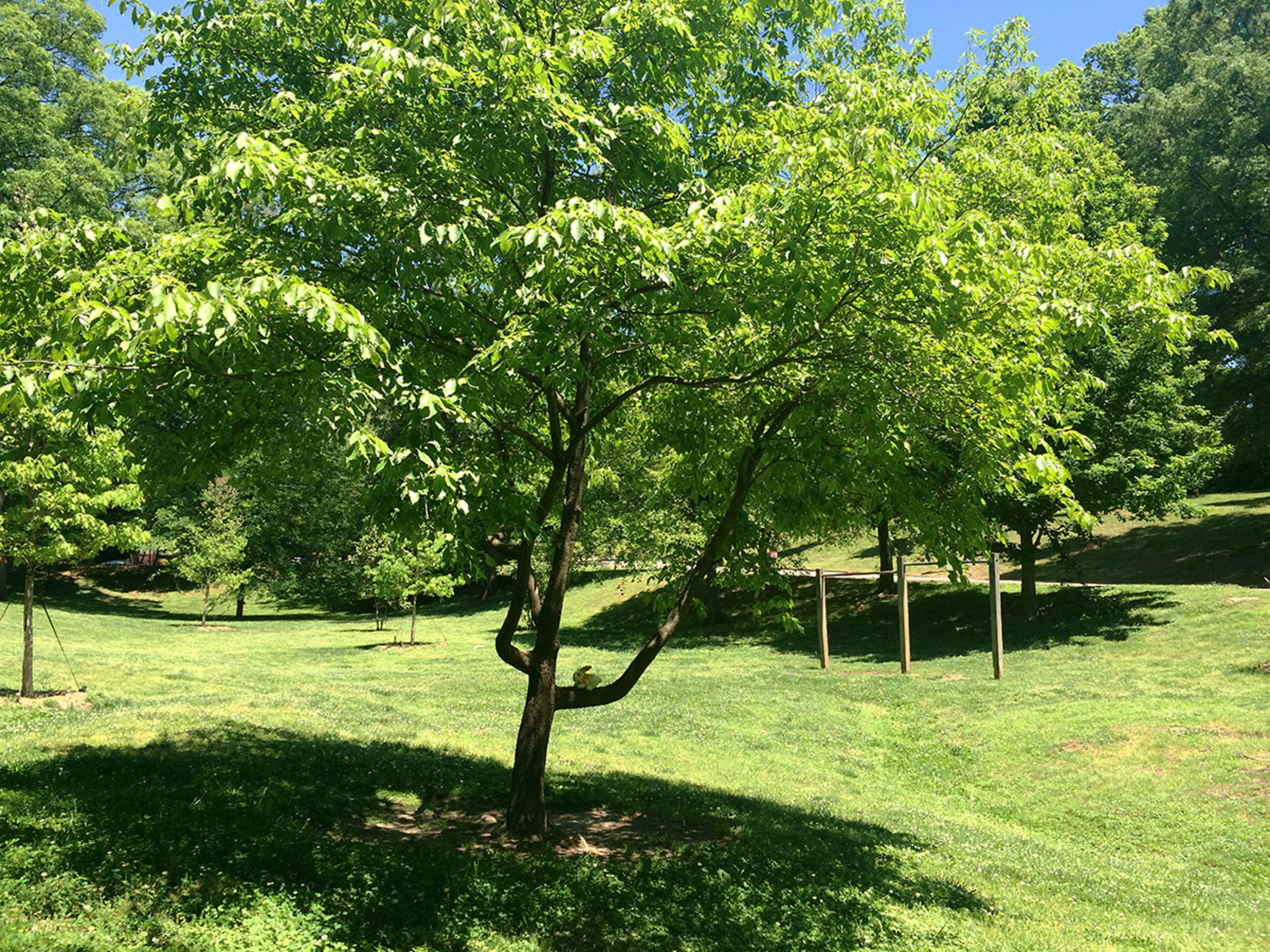
Sally the Climbing Tree
This dogwood in Grant Park is such a local institution that it has its own Facebook page. And just look at it – it's just begging to be climbed right now, despite the fact that there are actual exercise bars within a stone's throw. (Side note: Did anyone lose this stuffed bunny?) A dusty circle at its base testifies to how many small sneakers have landed after a big jump from its branches. To see it: Sally is on the northwest side of Grant Park, off of Cherokee Avenue between Sydney and Orleans streets.

The White Oak at Connally Nature Park
The 27-acre Connally Nature Park in East Point is a must-see, and this White Oak is a celebrity among local arborists. The park sits on land that has been contested more than once – in the 1960s, the 1990s (when East Point wanted to put a softball complex there) and most recently in 2002. That year, Trees Atlanta and other preservationists won a battle with the Fulton school board to stop a proposed elementary school from being built on the site. Today, the park is still preserved by Trees Atlanta (the school got built elsewhere). The park's oaks were likely planted as shade trees for the Connally plantation in the 1800s. This particular White Oak is the largest within the Perimeter and was once called the state champion White Oak (other oaks have claimed that title since). Approach it, and you get the impression that the other trees around it have backed away, just happy to be part of its entourage. To see it: Connally Nature Park is located on Connally Drive off of Mulberry Street. The White Oak can be found about 500 feet into the trail on the left.

The Decatur Recreation Center Magnolia
Generations of Decatur children have climbed the busy root system of this tree. Its canopy is so large that Neil Norton of the Georgia Arborist Association likes to call it "The Magnolia Room," and some groups meeting at the rec center choose to convene under these leaves when the weather's nice. The grounds were once the home of Col. George Washington Scott, the benefactor of Agnes Scott College (the school is named after his mother), who lived there from 1877 to 1902. Considering the age of the magnolia, that tree could have been planted during that time. According to Decatur Metro, Scott's daughter donated the land to the city in the 1950s to be a park and the rec center replaced the old Scott-Cooper Home in 1958. Note: The state's largest Horse Chestnut tree stands right next to the Magnolia. To see it: Visit the Decatur Recreation Center at 231 Sycamore Street.
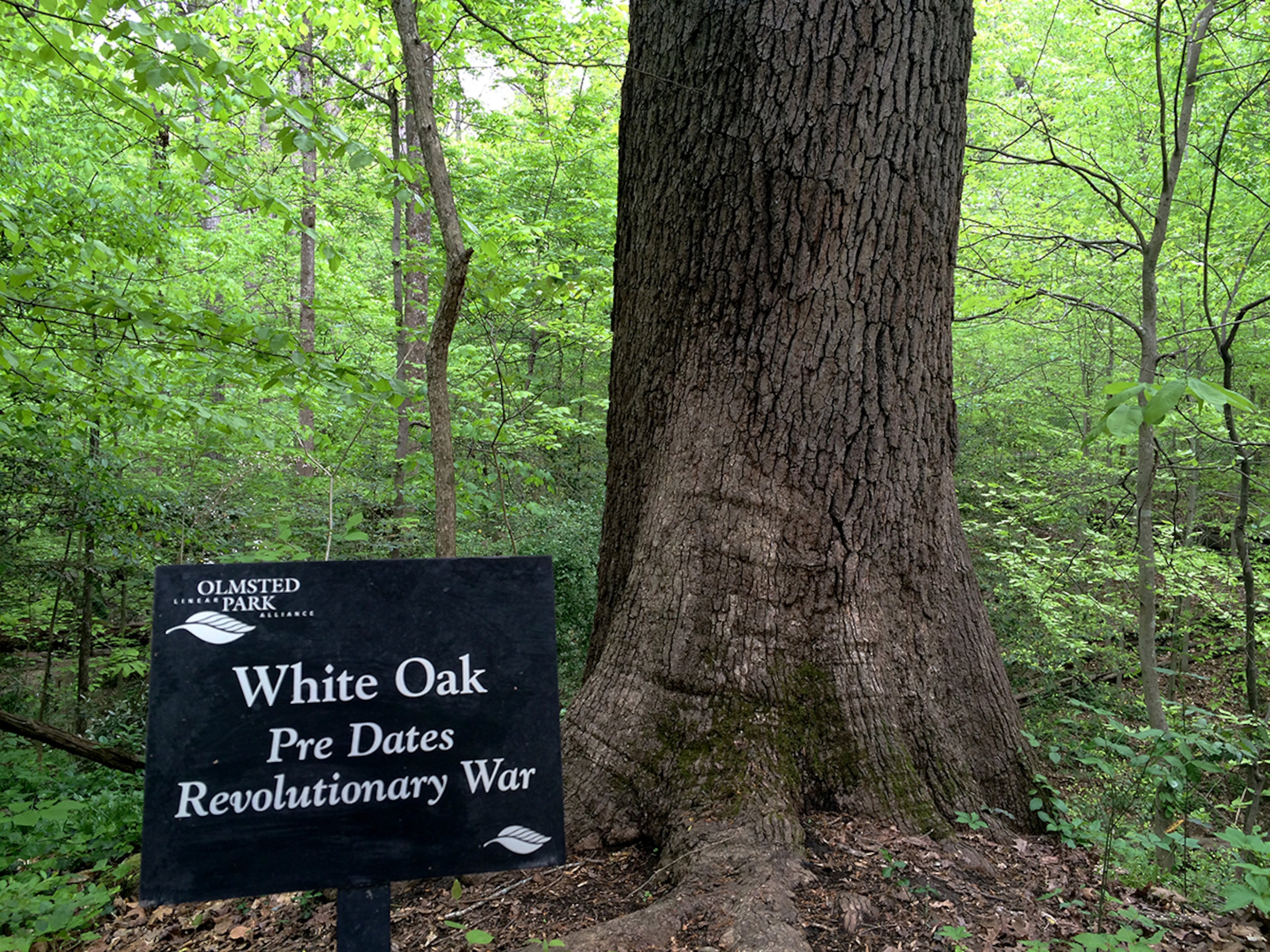
The White Oak at Deep Dene Park
The oldest dated tree in Atlanta can be found in Deep Dene Park (technically right outside the city limit). Deep Dene is the largest of the Olmsted Linear Park system, and unlike its sisters was left in a very natural state. The creek running though the park carved steep slopes, making the land unattractive to developers during the crucial decades when Atlanta and Decatur expanded into the area. This White Oak was cored in 2011 by researchers from the Fernbank Museum and Kennesaw State, who determined the tree to be 240 years old – older than the Declaration of Independence. To see it: Deep Dene Park is on Ponce de Leon Avenue where East Lake Road turns off. The White Oak is located on the main path in the center of the park, and has a marker next to it.
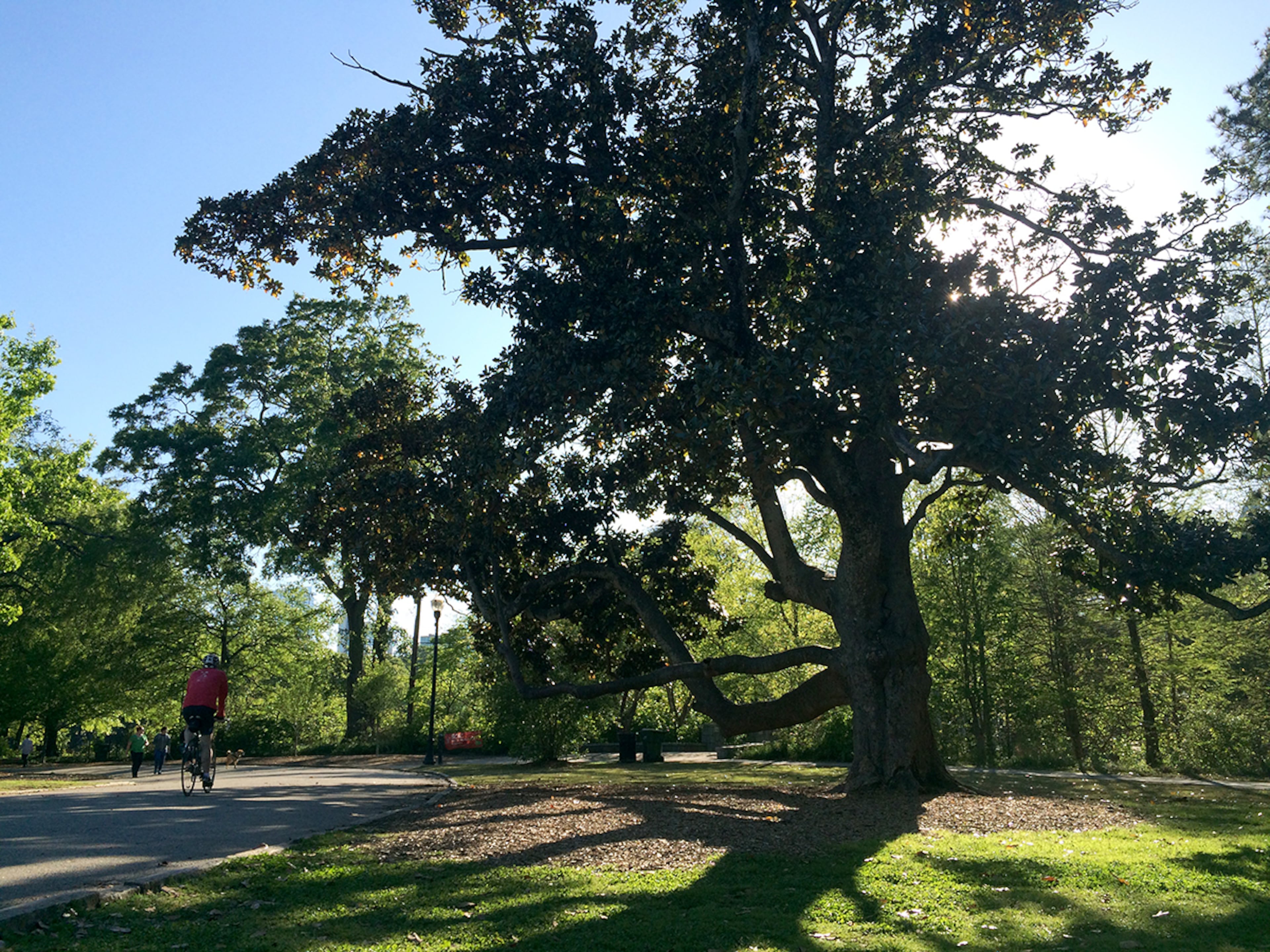
The Piedmont Park 'Climbing Magnolia'
This is perhaps the most photographed tree in Atlanta's busiest city park. Chances are you've either climbed it, taken a photo of someone climbing it or watched someone taking a photo of someone climbing it. The lowest branch is smooth from all the posteriors that have grinded its surface. Considering its size, this magnolia may have been here when the Cotton States and International Exposition was held on the park's grounds in 1895. Update: The magnolia fell over in July and had to be removed.
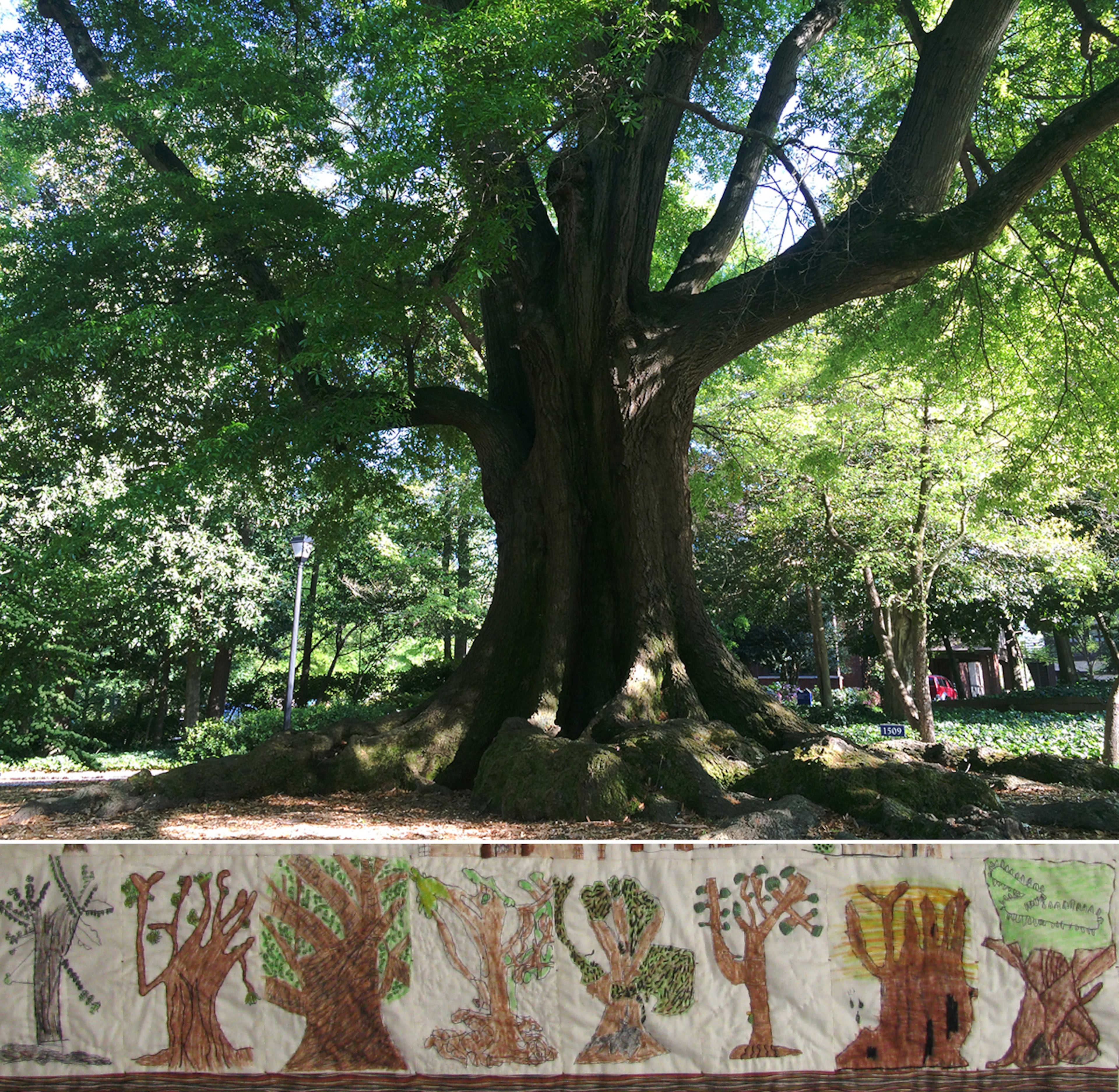
The Paideia School Storytelling Tree
This Water Oak is the kind of tree guaranteed to capture your imagination. It sits in the Olmsted Linear Parks, where students from The Paideia School often spill out from across the street. For 15 years, teacher Judy Cloues – recently retired – led 2nd- and 3rd-graders in a variety of activities around this tree. Some days they read stories under it, with the children seated on the large roots. Other days they would write journal entries under it and imagine what the area looked like when the oak was an acorn more than 100 years ago. Students made rubbings of the bark, took measurements, collected leaves and watched bugs up close. A quilt sold at a school auction featured children's portraits of the tree (shown above, courtesy of Judy Cloues). Sometimes they would just lie on their backs and look up. "There were children in that class for whom that tree was a friend," Cloues says. "When they graduate and move on, I'm sure they'll remember that tree." To see it: The tree stands in Dellwood Park on Ponce de Leon Avenue near the Fairview Road intersection.

The Oakland Cemetery Magnolia
This Southern Magnolia looming over the Confederate section of the cemetery is the largest in Atlanta. It comes with a story too. According to "The Historic Oakland Cemetery of Atlanta," the brother of Private Lucian Brahan Weakley honored his brother's death at Chickamauga by planting a magnolia sprout behind his grave in 1885. Weakley's tombstone has needed repairs over the years but it still stands right up against the trunk of the 130-year-old tree. To see it: The tree sits to the southwest of the cemetery's Confederate Obelisk.
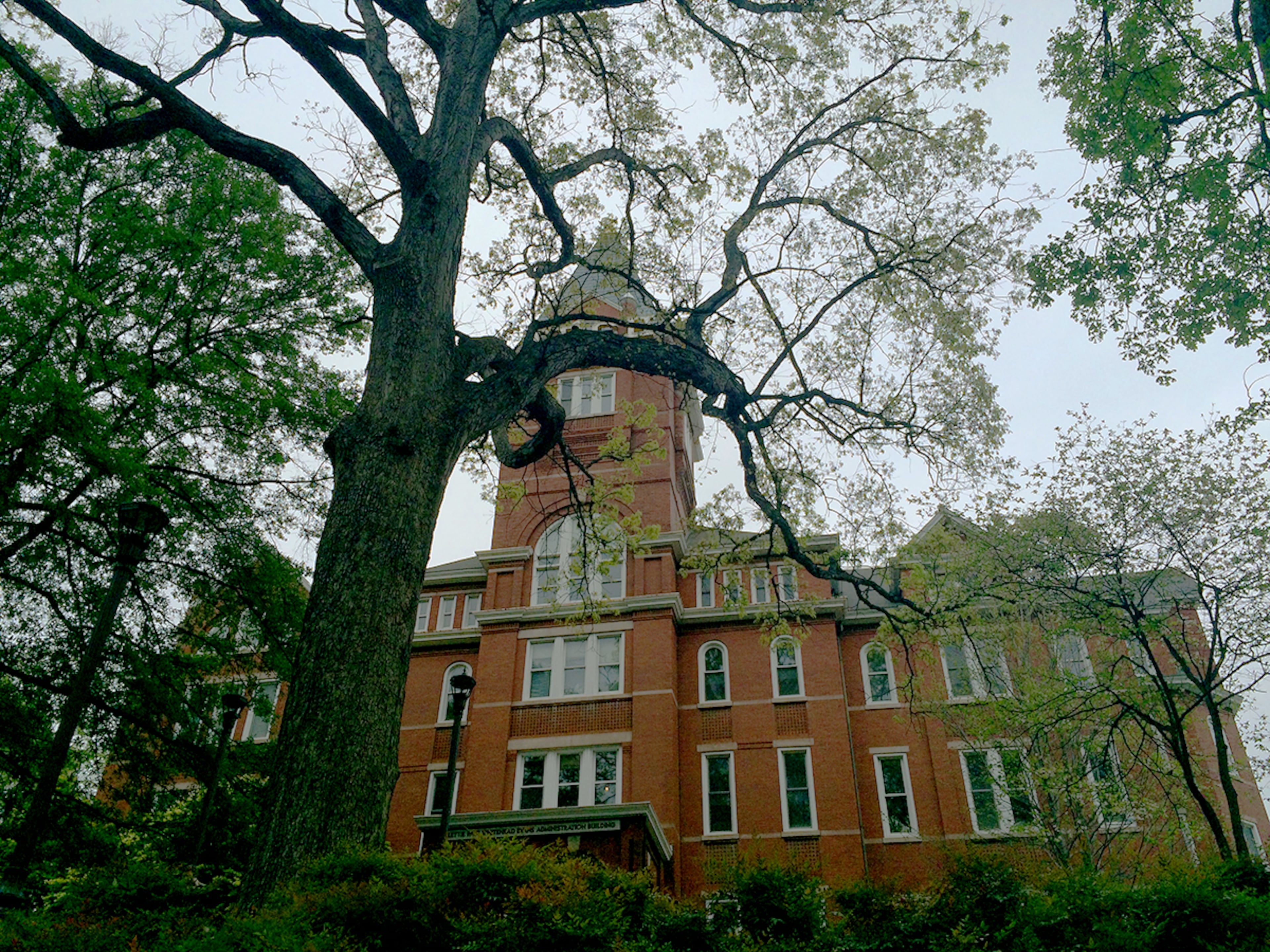
The Georgia Tech Tower White Oak
Tech Tower Lawn is home to several large White Oaks, and the campus is particularly proud of this one next to the steps leading to Tech Tower. The university says that the tree can be seen in photos of Tech Tower as far back as 1888. Tech would also like you to know that this tree has a carbon storage capacity of 11,177 pounds and sequesters an additional 217 pounds of carbon every year. To see it: Tech Tower Lawn faces North Avenue next to Bobby Dodd Stadium.

The Israel Baptist Church Red Oak
This red oak is the largest on Eli Dickerson's list and the second-largest oak that is publicly visible in Atlanta. Beyond that, not too much is known about it. Israel Baptist Church is not the first church to occupy the grounds – church administrator Lemuel Horton says that an earlier congregation built the church, then sold it to the city. The city used the building as an elementary school, he says, before selling it to Israel Baptist in the late 1970s. To see it: The church is on Hosea Williams Drive at Norwood Avenue.

Tanyard Park White Ash
This White Ash in Louise G. Howard Park (across from Tanyard Park) is the largest in the state. Sitting directly on the Northside Beltline trail, it's notable for its distinctive diamond-shaped bark. This park also sits smack-dab in the middle of the Battle of Peachtree Creek site. This tree's age isn't known, but any tree in this park more than 150 years old would literally be a battlefield survivor. To see it: The park is on the other side of Collier Road from Tanyard Creek Park. Follow the trail from the Collier Road bridge underpass. The tree is on the left side of the trail after a sharp lefthand turn.

The 'Sueño' Willow Oak
Peter Jenkins (seen here guiding from the ground), the founder of Tree Climbers International, names the trees he works with as if they were buddies earning their nicknames after a crazy night out. He's climbed — and taught climbers on — the likes of Jacques & Jill, McCrutcheon, Double-Up, Frenchie and Sweetheart. "Here's how it works," he says, "The first person to climb the tree has the right to name the tree." Jenkins pioneered the idea of climbing trees for fun, always careful to use techniques designed not to injure them. Before, he says, tree climbing was an extension of professional tree work, which uses spikes. This Willow Oak in Brookhaven's Blackburn Park is his current favorite and has earned the name Sueño, or "dream" in Spanish. "It's my dream tree!" he says. "It has the best structure for teaching new climbers. It's a low tree (68 feet tall), and it's an open-grown tree — no other trees grew near it, so it has a well-rounded crown." To see it: Blackburn Park is on Ashford Dunwoody Road at Johnson Ferry Road. Sueno sits alone across from the tennis courts.

America's Tallest Dogwood
It might not look like much from the trail (that's it leaning in the center), but this is the tallest measured Dogwood tree in the country, as certified by the Native Tree Society. It can be found in Decatur's Woodlands Gardens, a preserved pocket of forest that was once the woodsy Scott Boulevard home of Dr. Chester Morse. The good doctor planted a diverse selection of trees around his home, but garden manager Ruby Bock believes that this tree was "planted by Mother Nature." She also thinks it's possible that the Dogwood is older than the tall pines that surround and compete with it. Pines grow quickly, she says. "It's kind of like when your younger brother ends up taller than you." To see it: Woodlands Park is on Scott Boulevard near the intersection with Clairemont Road. The Dogwood is at a trail split near the park's small ampitheater.

The 'Battle of Decatur' White Ash
The Agnes Scott campus is home to many large trees, including three listed on the Georgia Urban Forest Council Landmark & Historic Tree Register. According to that register's listing, this tree dates back to 1854 – 35 years before the school's founding and ten years before the Civil War fighting came to Decatur. To see it: The tree can be seen on Milton Candler Lane outside Inman Hall.

Agnes Scott's 'Mystery Incense Cedar'
This tree shouldn't be here, and how it got here makes local arborists scratch their heads. At least 160 years ago, someone brought an Incense Cedar seedling from the West Coast and planted it on South Candler Street on what is now part of the Agnes Scott campus. Why? Theories abound on the Georgia Urban Forest Council's Landmark Tree listing – perhaps it was an antebellum home's front-yard curiosity? Or maybe a pencil manufacturer's test planting (its wood was popular for pencils)? Maybe Spanish explorers put it there? British horticulturalists? A Dahlonega gold miner? Cue the theremin music. To see it: The Incense Cedar is on South Candler Street, next to the entrance of a small campus parking lot.
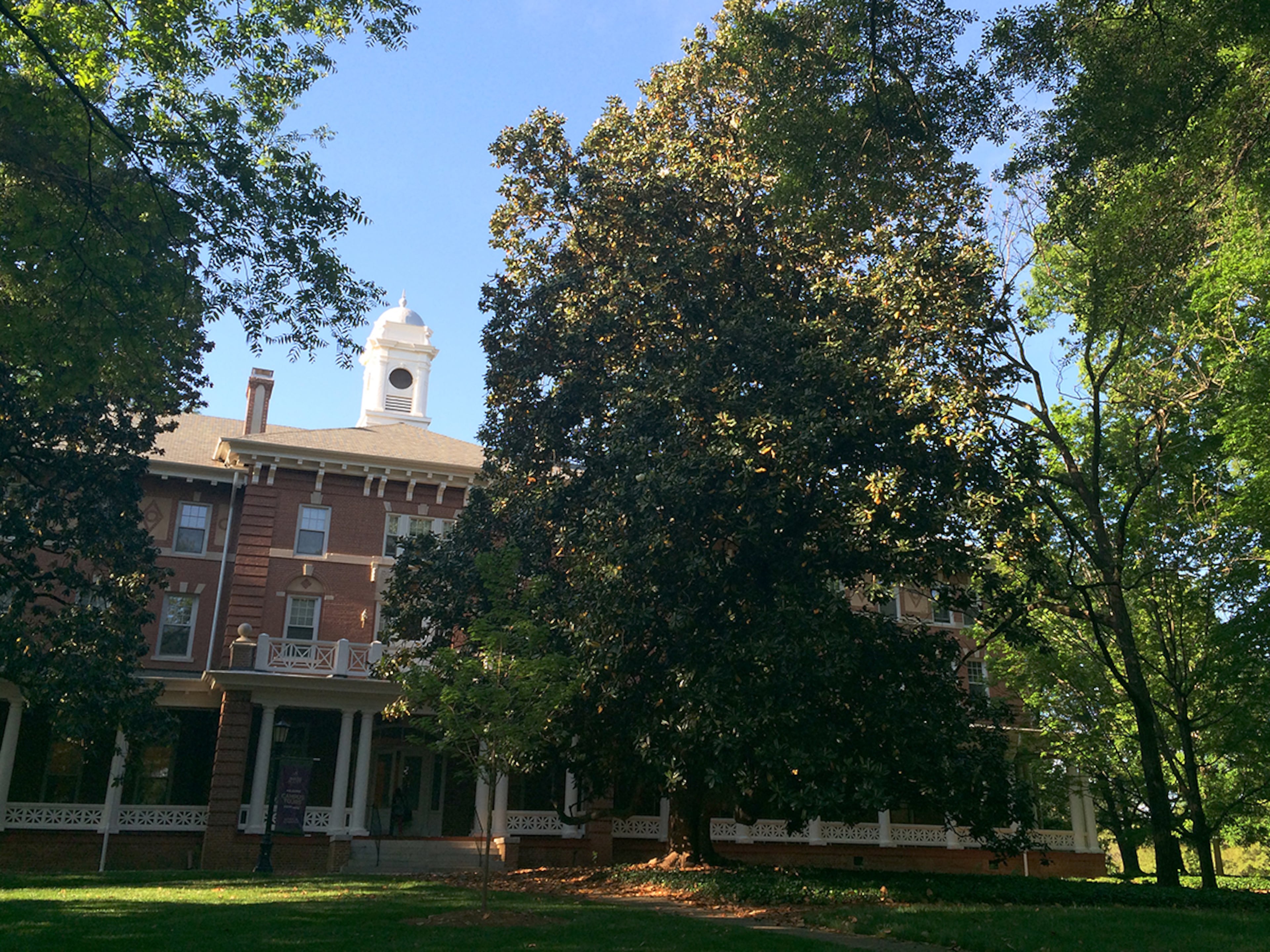
The 'Professor Dieckmann Magnolias'
The third of Agnes Scott’s Landmark trees is actually a collection of three Magnolias planted by Christian W. Dieckmann, the school’s long-serving music professor. As the story goes, Dieckmann was walking with a colleague through a forest next to the campus around 1905, when he scooped up some magnolia seeds with his pocketknife and planted them in front of Rebekah Scott Hall. To see it: The most visible of magnolias is on Milton Candler Lane, in front of Rebekah Scott Hall.



